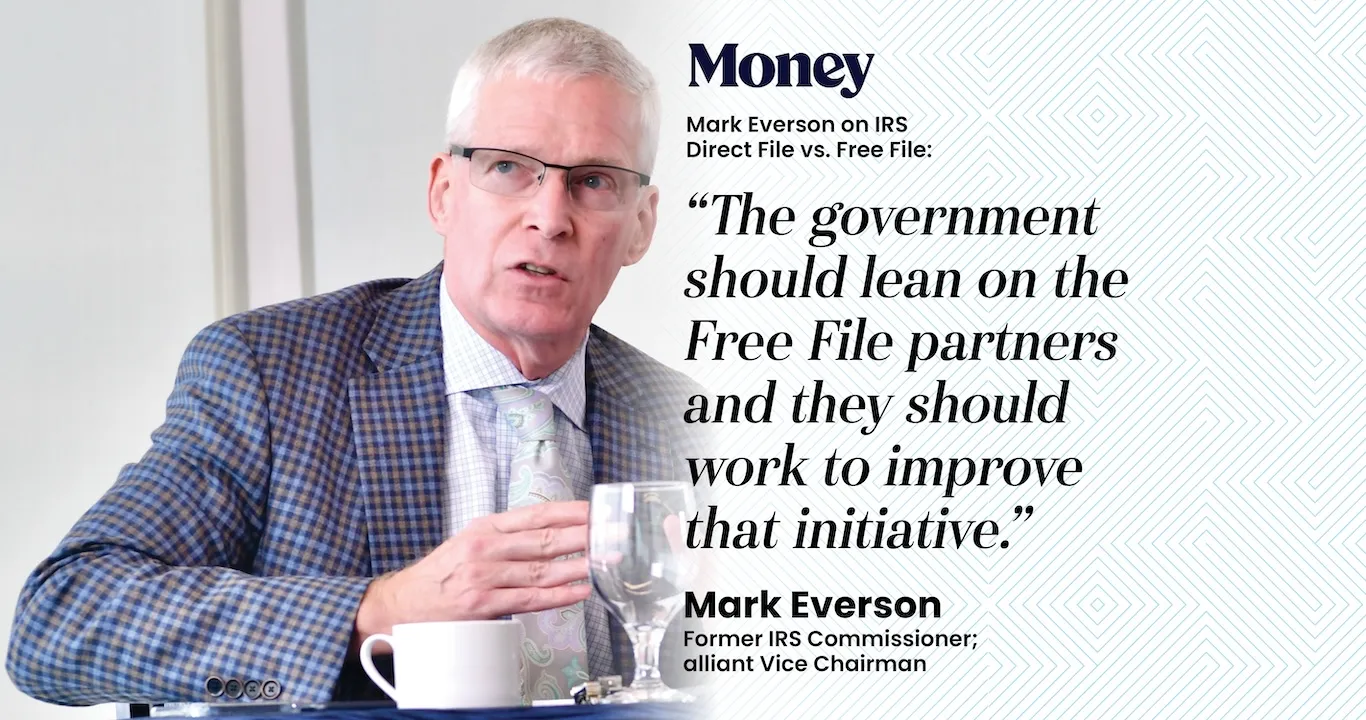PUBLISHED IN
Quotes from Eric Hylton, Former IRS Commissioner of the Small Business/Self Employed Division; alliantgroup National Director of Compliance
If you have any questions about this article, please send us a message.
The Internal Revenue Service is giving employers a way to rescind inaccurate claims for the Employee Retention Credit if they’ve fallen victim to a scam at the hands of so-called “ERC mills” that aggressively promote the credit to businesses.
The move comes after the IRS announced last month that it was temporarily halting the processing of new ERC claims after receiving a surge of hundreds of thousands of claims in recent months due to relentless promotion of them as a way to score money from the federal government (see story). At the time, the IRS said it would soon announce a process for withdrawing illegitimate claims for the tax credits that haven’t yet been paid as a way to avoid penalties and interest for employers who fell victim to the scams.
This new withdrawal option will enable certain employers that filed an ERC claim but haven’t yet received a refund to withdraw their submission and avoid future repayment, interest and penalties. Employers that submitted an ERC claim that’s still being processed can withdraw the claim and avoid the possibility of getting a refund for which they’re ineligible. Claims that are withdrawn will be treated as if they were never filed, and the IRS won’t impose penalties or interest.
However, those who willfully filed a fraudulent claim, or who helped or conspired in that type of conduct, will not be exempted from possible criminal investigation and prosecution.
“The IRS is committed to helping small businesses and others caught up in this onslaught of Employee Retention Credit marketing,” said IRS Commissioner Danny Werfel in a statement Thursday. “The aggressive marketing of these schemes has harmed well-meaning businesses and organizations, and some are having second thoughts about their claims. We want to give these taxpayers a way out. The withdrawal option allows employers with pending claims to avoid future problems, and we encourage them to closely review the withdrawal option and the requirements. We continue to urge taxpayers to consult with a trusted tax professional rather than a marketing company about this complex tax credit.”
Employers can use the new claim withdrawal process if all the following conditions apply:
- They made the claim on an adjusted employment return (Forms 941-X, 943-X, 944-X, CT-1X).
- They filed the adjusted return only to claim the ERC, and they made no other adjustments.
- They want to withdraw the entire amount of their ERC claim.
- The IRS has not paid their claim, or the IRS has paid the claim, but they haven’t cashed or deposited the refund check.
Taxpayers who are not eligible to use the withdrawal process can reduce or eliminate their ERC claim by filing an amended return. For details, see the Correcting an ERC claim – Amending a return section of the frequently asked questions about the ERC.
To withdraw a claim, taxpayers should carefully follow the special instructions at IRS.gov/withdrawmyERC, summarized below.
- Taxpayers whose professional payroll company filed their ERC claim should consult with the payroll company. The payroll company may need to submit the withdrawal request for the taxpayer, depending on whether the taxpayer’s ERC claim was filed individually or batched with others.
- Taxpayers who filed their ERC claims themselves, haven’t received, cashed or deposited a refund check and have not been notified their claim is under audit should fax withdrawal requests to the IRS. The IRS has set up a special fax line to receive withdrawal requests. This enables the agency to stop processing before the refund is approved. Taxpayers who are unable to fax their withdrawal can mail their request, but this will take longer for the IRS to receive.
- Employers who have been notified they are under audit can send the withdrawal request to the assigned examiner or respond to the audit notice if no examiner has been assigned.
Those who received a refund check, but haven’t cashed or deposited it, can still withdraw their claim. They should mail the voided check with their withdrawal request using the instructions at IRS.gov/withdrawmyERC.
Tax professionals and others can register for an IRS webinar on Nov. 2 providing the latest information on the ERC moratorium and options for withdrawing or correcting previously filed claims. Those who can’t attend will be able to watch a recording later.
The withdrawal process is almost like an amnesty in some ways. “For many, this is an unusual ‘get out of jail free’ opportunity and taxpayers are encouraged to consult their tax advisors on whether they should pursue this withdrawal process,” said Devin Tenney, a senior manager with Baker Tilly’s Washington National Tax Office, in a statement.
The IRS’s move should bring relief to the many small businesses that fell victim to ERC schemes.

“Kudos to the service in coming up with what is probably a game-changing program as far as the compliance effort that is needed in regards to the ERC program,” said Eric Hylton, a former commissioner of the IRS’s Small Business/Self-Employed division and deputy chief of the IRS’s Criminal Investigation division who is now national director of compliance at the tax consulting firm alliantgroup.
“As we look at the number of popup firms that have jumped into the market and caused any consternation within the ERC tax ecosystem, the overall purpose is just trying to prevent small businesses from falling victim to tax fraud as it relates to the ERC with some of these firms that have little to no experience in tax that are really trying to aggressively market the ERC without doing due diligence.”
Last month, the IRS produced a new question and answer checklist to help taxpayers understand if they’re eligible for the credit. Since then, the IRS has changed the checklist into an interactive IRS.gov feature to help employers and tax pros working with them check on potential ERC eligibility.
The IRS has noticed that marketers and scammers have already modified their ERC pitches after the Sept. 14 moratorium announcement. Some of them are prodding employers who submit an ERC claim into agreeing to costly up-front loans in anticipation of a refund. The IRS is asking taxpayers to avoid such loans and also to beware of the warning signs of ERC scams.
Featured Leadership

Hylton held several prominent positions at the IRS, including serving as Deputy of the Criminal Investigation Division and as CI’s head of International Operations. As National Director of Compliance, Eric employs his years of experience at the IRS to assist alliantgroup’s clients as an ambassador for U.S. small and medium sized businesses (SMBs) and in helping others become tax compliant.



